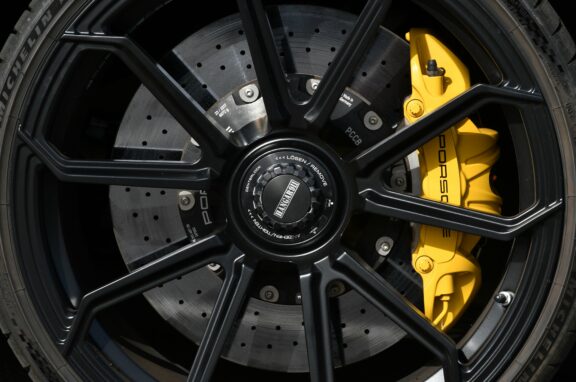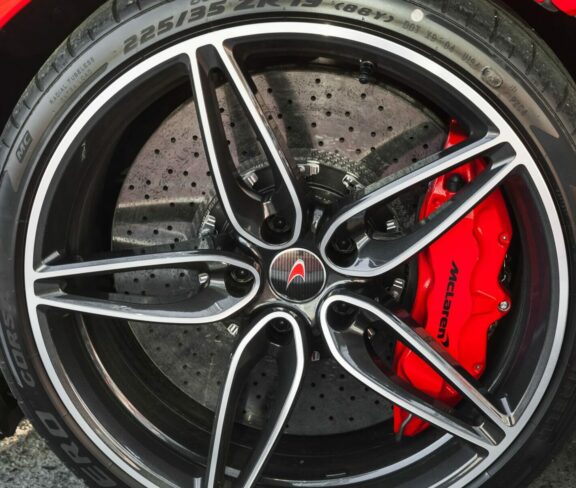The idea of using carbon materials has been around for some time. It was primarily used in the aerospace industry and F1 vehicles. In recent years, these materials have been further refined and developed. Most manufacturers or dealers offer a carbon-ceramic braking system when you buy a high-performance new car. Their principle of operation is the same as conventional brakes made of metal, but the carbon-ceramic composition offers a number of advantages.
A carbon-ceramic brake disc is made up of a mixture of materials that are treated by special processes and repeated heating up to 1,700 degrees Celsius. They are produced under high pressure and, in some cases, in a vacuum. They take up to 21 days to produce.
Carbon-ceramic discs are composed of carbon fibre (C) and silicon carbide (SiC). The arrangement of materials and fibres in the manufacturing process affects the thermal conductivity and the direction of heat dissipation.


